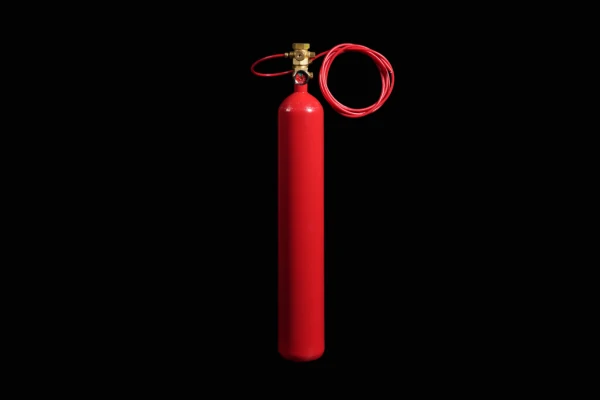FM200 Fire Detection Tube Fire Suppression System
Home » FM200 Fire Detection Tube Fire Suppression System

The FM200 Fire Detection Tube Fire Suppression System is an advanced automatic fire extinguishing solution that combines fire detection tubes with an FM200 suppression mechanism. This system uses direct or indirect sensing tube technology to detect the presence of a fire by sensing heat along the tube network. Once an increase in temperature is detected, the detection tube melts or ruptures, causing the heptafluoropropane (FM200 gas) to be released automatically, quickly blanketing the fire area and suppressing the flames through physical insulation and chemical reactions.
This system is highly suitable for protecting areas where traditional fire suppression methods might cause damage, such as server rooms, museums, or other spaces with sensitive or valuable equipment. The FM200 clean fire suppressant chemically interferes with the fire’s chemical processes and physically quenches the fire by depriving it of the oxygen needed for combustion and reducing the ambient temperature. The fire detection tubes can be customized to fit the layout of the protected area, providing a tailored solution for fire safety.

Technical Parameters
| Device Type | Heptane Fire Probe Hose Fire Extinguishing Device | |
| Model | TH-Z-Q-3/2.5/170-JA TH-Z-Q-6/2.5/150-JA | TH-J-E-6/170-JA TH-J-E-45/170-JA |
| Device Release Type | Direct Acting | Indirect Acting |
| Nominal Working Pressure (MPa) | 2.5 | 5.17 |
| Maximum Working Pressure (MPa) | 4.2 | 15 |
| Activation Temperature (℃) | 150+/-10 170+/-10 | 170+/-10 |
| Minimum Amount of Fire Extinguishing Agent Required per Unit Volume (kg/m³) | 0.7 | 1.5 |
| Maximum Length of Fire Probe Hose (m) | 25 | 25 |
| Maximum Length of Discharge Hose (m) | 12 | 12 |
Application Scenarios
Suitable for extinguishing the following fires:
- Radio and television transmission towers, including microwave rooms, decimeter wave rooms, meter wave rooms, transformer and switchgear rooms, and uninterruptible power supply rooms.
- Telecommunications systems, including programmable exchange rooms, control rooms, and signal transfer point rooms.
- Power generation plants, including control rooms, electronic equipment rooms, computer rooms, relay rooms, transformer and switchgear rooms, cable crossings, dense areas, and intermediate joints.
- Transformer and switchgear cabinets, elevator control cabinets, cable trays or troughs with trough boxes, or other special or important cabinet equipment with relatively sealed enclosures in other locations.
Do you want to have an efficient and clean fire extinguishing guarantee?
Lets get started. We're here to help.
